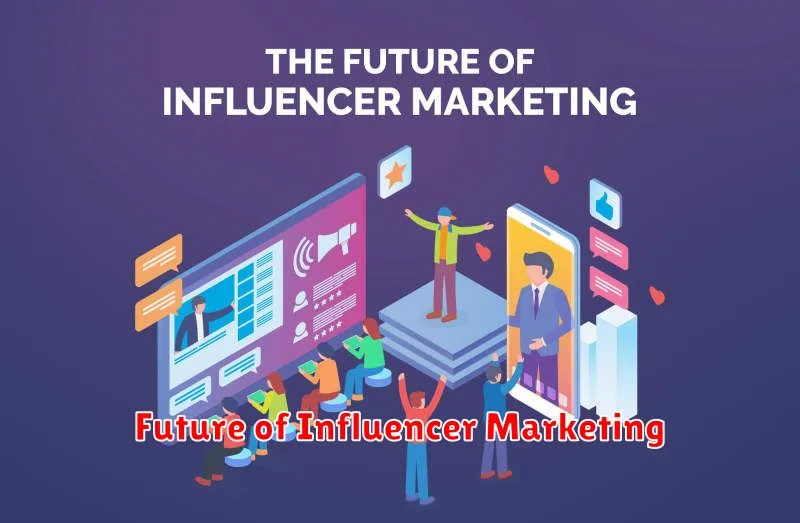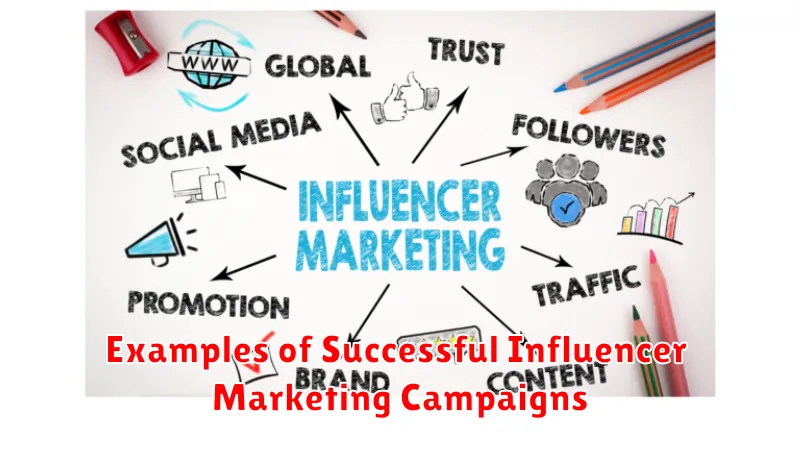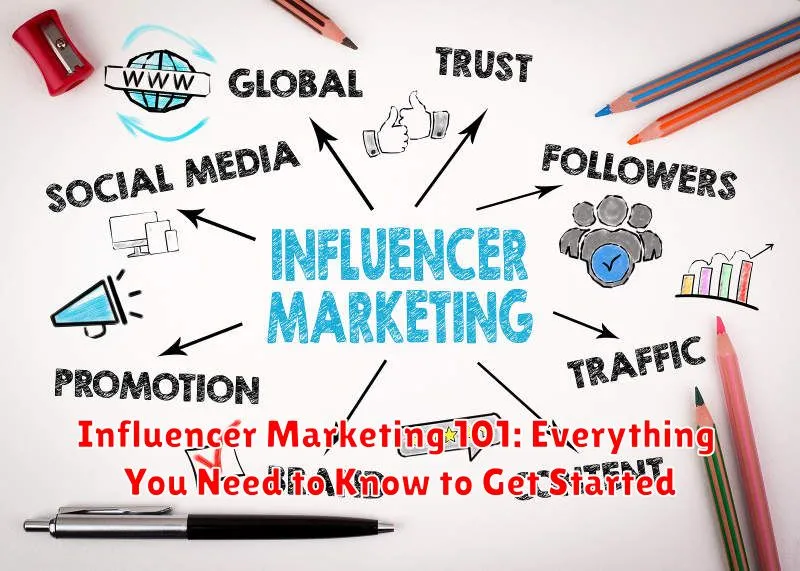Influencer marketing is a powerful strategy that leverages the reach and credibility of influencers to promote brands, products, and services. In today’s digital landscape, where consumers are constantly bombarded with information, influencer marketing offers a more authentic and engaging way to connect with target audiences. This Influencer Marketing 101 guide will provide you with everything you need to know to develop and execute successful influencer marketing campaigns, from identifying the right influencers to measuring the return on investment (ROI). Whether you are a small business owner or a marketing professional at a large corporation, understanding the fundamentals of influencer marketing is essential for success in the modern marketplace.
This comprehensive guide covers all the key aspects of influencer marketing, including defining your target audience, setting campaign goals, selecting appropriate influencer marketing platforms, and crafting compelling campaign messaging. Learn how to navigate the complexities of influencer collaborations, contracts, and disclosures. We’ll delve into the intricacies of measuring campaign performance and calculating ROI, providing you with the tools and knowledge you need to get started with your own successful influencer marketing campaigns. This Influencer Marketing 101 guide is designed to equip you with the everything you need to know to harness the power of influencers and achieve your marketing objectives.
What is Influencer Marketing?
Influencer marketing is a type of marketing that involves collaborating with influencers to promote your brand, product, or service. An influencer is an individual who has a dedicated and engaged following on social media or other online platforms, and who can influence the purchasing decisions of their audience.
These individuals have established credibility and trust within their niche, allowing them to effectively reach and resonate with a specific target market. Influencer marketing leverages this established relationship to introduce products or services to a receptive audience.
Rather than marketing directly to a large group of consumers, you instead partner with influencers to get out the word for you. Influencers promote your product or brand to their followers, generating awareness and driving engagement.
Why is Influencer Marketing Effective?
Influencer marketing leverages the trust and credibility that influencers have built with their audience. These individuals have cultivated a dedicated following who actively engage with their content and value their opinions.
This established connection allows brands to tap into a pre-existing, engaged audience and bypass the challenges of building brand awareness from scratch. Recommendations from a trusted source are significantly more impactful than traditional advertising, leading to increased brand visibility and consumer engagement.
Furthermore, influencer marketing offers a high degree of targeting. Brands can select influencers whose audience aligns with their target demographic, ensuring that their message reaches the right consumers. This precision targeting contributes to improved campaign ROI and a more efficient allocation of marketing resources.
Types of Influencer Marketing
Influencer marketing campaigns can take various forms, each with its own strengths and applications. Understanding these different types is crucial for tailoring your strategy effectively.
1. Social Media Campaigns
This is the most common type, involving influencers promoting your brand or product on platforms like Instagram, TikTok, or YouTube. This can include sponsored posts, stories, or even live streams.
2. Blog Posts and Articles
Long-form content provides a deeper dive into your offerings. Influencers can create dedicated blog posts or articles reviewing, showcasing, or integrating your product into a relevant narrative.
3. Affiliate Marketing
In this performance-based model, influencers earn a commission for every sale generated through their unique referral links or codes. This directly ties influencer efforts to tangible results.
4. Events and Experiences
Influencers can participate in or host events to generate buzz and connect with your target audience face-to-face. This can involve product launches, exclusive previews, or meet-and-greets.
5. Gifting and Product Reviews
Sending influencers free products in exchange for honest reviews or mentions can be a cost-effective way to generate awareness and build credibility, particularly for newer brands.
How to Choose the Right Influencers
Selecting the right influencers is crucial for a successful campaign. Relevance to your target audience is paramount. An influencer’s follower demographics should align with your ideal customer profile.
Engagement is key. Look beyond follower count and examine the level of interaction on their posts. High engagement signifies an active and invested audience. Authenticity is also vital. Choose influencers who genuinely connect with their followers and whose values align with your brand.
Consider the influencer’s content quality. Does their content resonate with your brand’s aesthetic and message? Finally, factor in budget and negotiate rates that align with the influencer’s reach and engagement levels.
How to Measure the Success of Your Influencer Marketing Campaigns
Measuring the effectiveness of your influencer marketing campaigns is crucial to understanding your return on investment and optimizing future strategies. Key performance indicators (KPIs) should be defined before the campaign begins and aligned with your overall marketing goals.
Common metrics for tracking success include:
- Reach: How many unique users saw the influencer’s content.
- Impressions: The total number of times the content was displayed.
- Engagement: Likes, comments, shares, and saves on the content.
- Website Traffic: Track referral traffic from the influencer’s platforms to your website.
- Conversions: Measure sales, leads generated, or other desired actions resulting from the campaign.
Utilizing trackable links and promo codes can help attribute conversions directly to the influencer campaign. Analyzing these metrics will reveal valuable insights into which influencer partnerships are most effective and which strategies resonate best with your target audience.
Common Mistakes to Avoid in Influencer Marketing
One common pitfall is choosing the wrong influencers. Partnering with influencers solely based on follower count can be detrimental. A large audience doesn’t guarantee engagement or alignment with your brand. Focusing on micro-influencers with a highly engaged niche audience often yields better results.
Another mistake is lack of clear campaign goals. Define specific, measurable, achievable, relevant, and time-bound (SMART) objectives. Without clear goals, measuring the success of your campaign becomes impossible.
Ignoring FTC guidelines is a serious mistake. Ensure all sponsored content is clearly disclosed to maintain transparency and build trust with your audience.
Micromanaging influencers can stifle their creativity and authenticity. Provide clear guidelines, but allow them the freedom to create content that resonates with their audience.
Finally, not measuring campaign performance hinders your ability to optimize future campaigns. Track key metrics like engagement, reach, and website traffic to understand what works and what needs improvement.
Best Practices for Influencer Marketing
Define clear campaign goals. Before launching a campaign, establish measurable objectives. Do you aim to increase brand awareness, drive sales, or generate leads? Clearly defined goals will guide your strategy and enable accurate performance measurement.
Choose the right influencers. Partnering with influencers whose audience aligns with your target market is crucial. Consider factors like audience demographics, engagement rates, and content authenticity. A smaller, highly engaged audience is often more valuable than a massive, passive one.
Develop authentic content. Encourage influencers to create content that feels genuine and aligns with their personal brand. Forced or inauthentic content can damage both the influencer’s and your brand’s credibility.
Disclose the partnership. Transparency is paramount. Ensure influencers clearly disclose their partnership with your brand using appropriate hashtags like #ad or #sponsored.
Track and analyze results. Monitor key metrics like reach, engagement, website traffic, and conversions. Analyzing these results helps optimize future campaigns and demonstrate ROI.
Future of Influencer Marketing

The influencer marketing landscape is constantly evolving. Several key trends are shaping its future, impacting how brands connect with their target audiences.
Increased Transparency and Authenticity: Consumers are increasingly discerning, demanding greater transparency from influencers and brands. This includes clear disclosure of sponsored content and genuine endorsements. Authenticity will be paramount, with audiences gravitating towards influencers who align with their values and maintain genuine connections with their followers.
Rise of Micro and Nano Influencers: While macro-influencers still hold sway, the rise of micro and nano influencers (with smaller, highly engaged audiences) presents a significant opportunity for niche marketing. Their focused reach and authentic engagement often lead to higher conversion rates.
Integration of AI and Data Analytics: Data-driven influencer marketing will become increasingly sophisticated. AI-powered tools will help brands identify the right influencers, track campaign performance, and measure ROI with greater precision.
Expansion of Short-Form Video and Live Streaming: Platforms like TikTok and Instagram Reels are driving the popularity of short-form video content. Live streaming also offers a powerful way for influencers to connect with their audience in real-time, fostering deeper engagement and driving immediate sales through features like live shopping.
Examples of Successful Influencer Marketing Campaigns

Examining successful campaigns provides valuable insights for developing your own strategy. Here are a few examples:
Glossier and Beauty Bloggers
Glossier leveraged beauty bloggers and micro-influencers to generate buzz and build an engaged community around their products. This approach, focusing on authenticity and user-generated content, significantly contributed to the brand’s rapid growth.
Daniel Wellington and Instagram Influencers
Daniel Wellington’s strategy involved gifting watches to numerous Instagram influencers. The resulting influx of stylish photos wearing the watches, often using a branded hashtag, quickly elevated the brand’s visibility and drove sales.
Nike and Athlete Partnerships
Nike consistently partners with high-profile athletes like LeBron James and Serena Williams. These long-term partnerships, built on shared values and a strong brand narrative, go beyond simple product endorsements and create a powerful association between Nike and athletic excellence.

